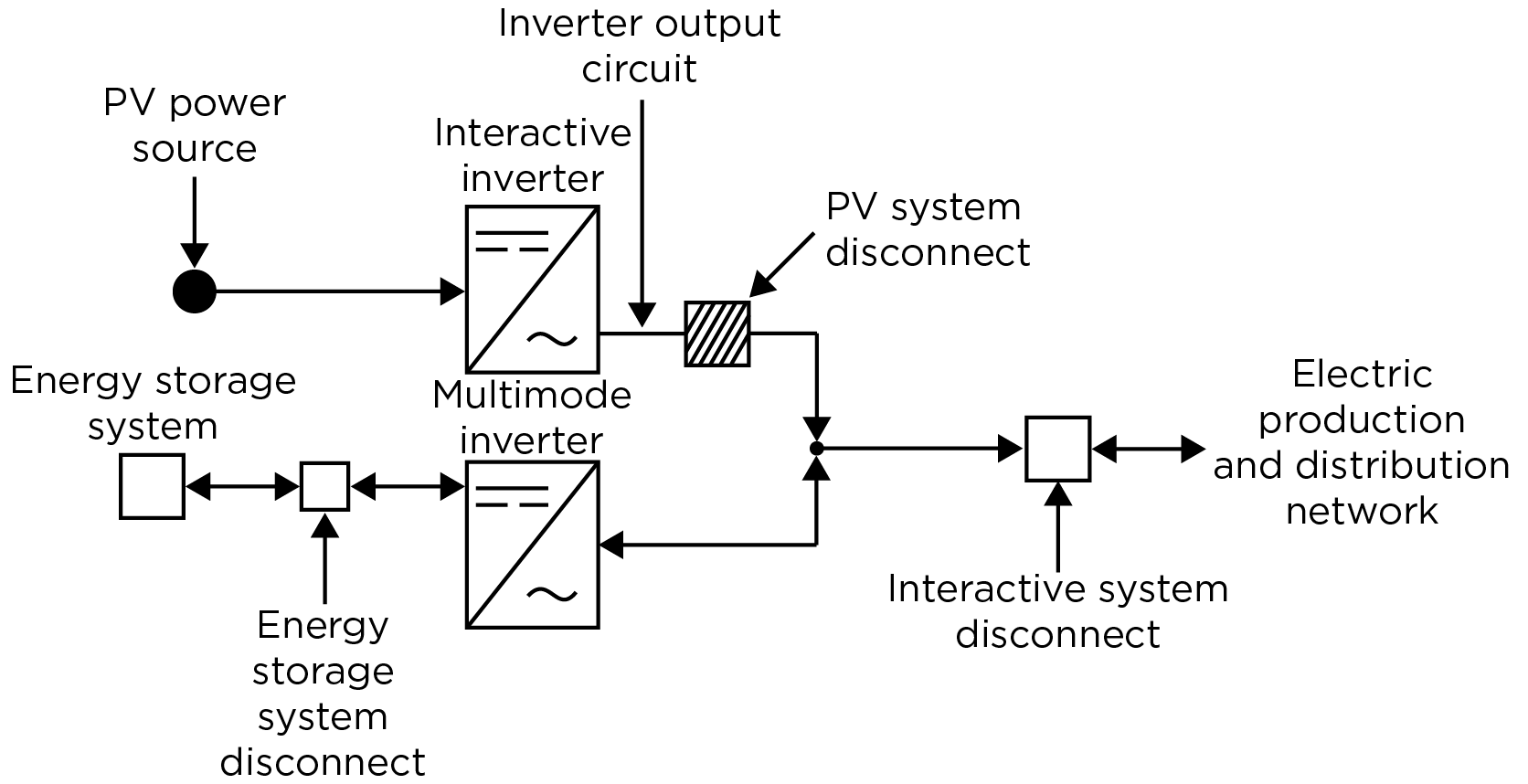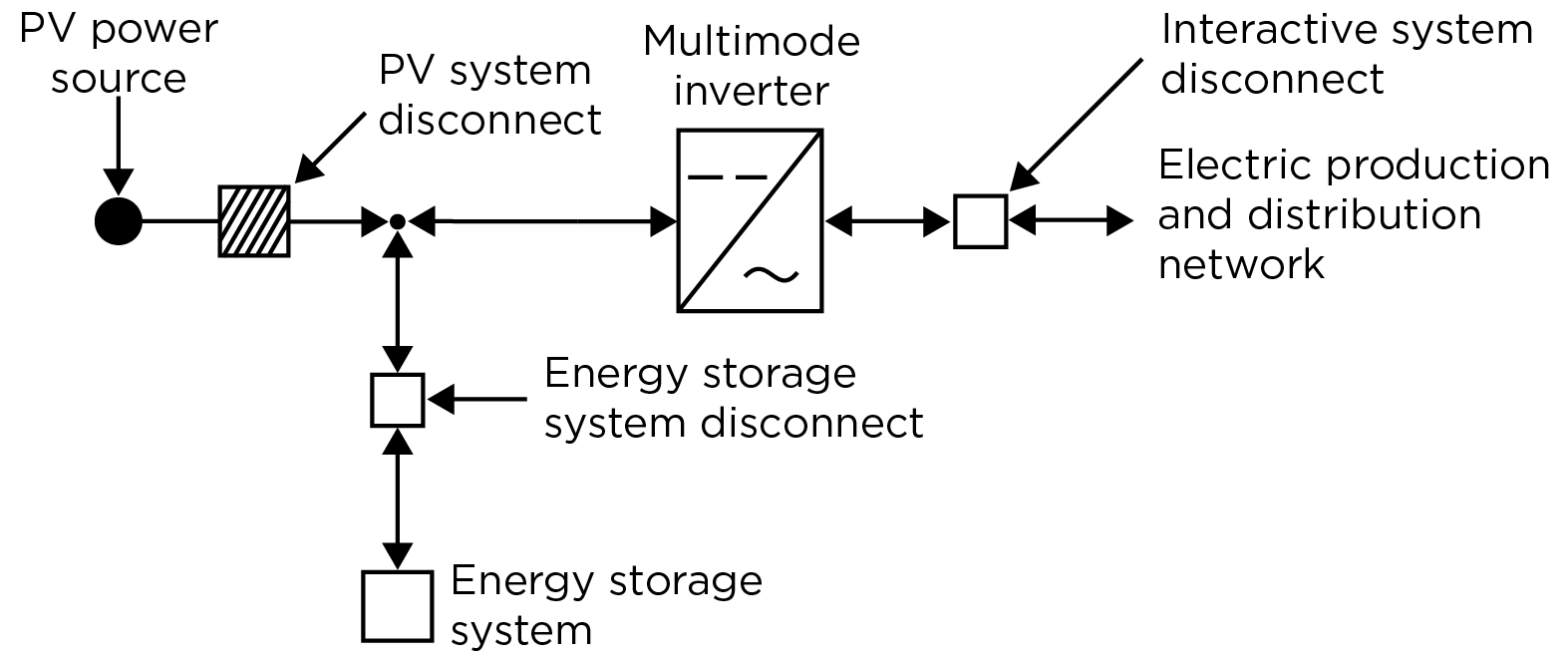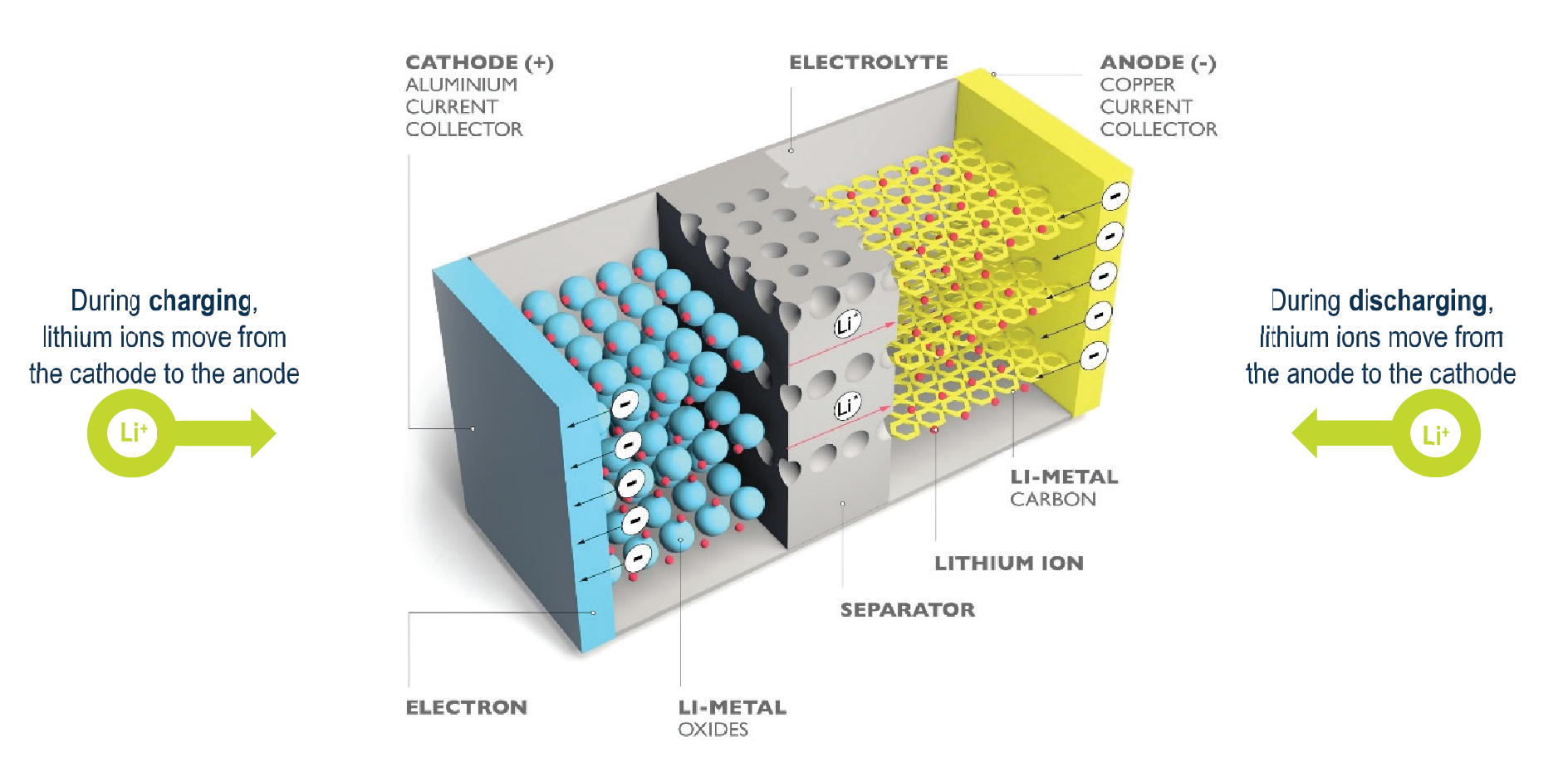DC-coupled storage: Solar and storage are located on the same site and are coupled together on the DC side of the inverter. The solar and storage share the same inverter(s) and use the same grid interconnection.
- System advantages:
- Cost savings using one inverter and other balance-of-system components for solar and battery conversion.
- Captures excess DC PV energy that is typically lost to inverter clipping during certain production periods (DC clipping).
- System disadvantages:
- Usually requires a DC-DC converter between the batteries and solar DC bus, which requires additional space and maintenance distributed throughout the solar arrays.
- May have limitations on providing ancillary services to the grid.
- Augmentation can be more difficult due to space limitations.
- Not ideal for retrofitting existing PV systems.
- Coordination with solar design and installation.
No matter the configuration, utilities can leverage solar-plus-storage system arrangements to achieve the same goal: provide stored renewable energy onto the grid when needed.
Battery Technologies
BESS rely on an energy storage technology to efficiently manage the storage and power output of energy to the grid. However, based on how the system will be used, not all battery storage technologies are equal.
Traditional battery technologies, such as lead-acid and nickel-based batteries, are proven in other, more common applications, but not necessarily ideal for large-scale solar applications. Lead-acid batteries, for example, are inexpensive but offer a short life cycle and poor energy density and are sensitive to ambient temperatures.
Lithium-ion battery systems are the most common, but based on the use case, other battery technologies such as flow batteries may be worth evaluating for solar-plus-storage projects, especially as the non-lithium-ion battery technologies mature and become more cost competitive.
Lithium-Ion Batteries
Commercially introduced in 1991, lithium-ion (Li-ion) battery technology is the most widely used for utility-scale energy storage. With a high energy density and relatively long life cycle, Li-ion batteries offer high round-trip energy efficiencies. This technology is seeing large manufacturing capacities and lower costs primarily due to its use in electric vehicle applications.
For storage periods around four hours, Li-ion batteries are very cost-effective. Likewise, Li-ion batteries can be custom configured for specific applications. Drawbacks to Li-ion technology include thermal runaway hazards, stringent HVAC requirements, as well as manufacturer limitations on charge/discharge cycles to maintain the warranty. There are several Li-ion battery types and manufacturers, and evaluation is needed to determine the optimal technology for solar-plus-storage applications, including cycle limitations, augmentation strategies and end-of-life disposal requirements.



